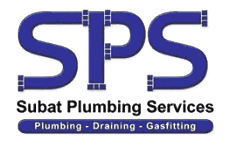Stormwater Drainage in Maitland
- 24/7 Emergency Support
- Upfront, Honest Pricing
- Licensed Local Experts
Get A Callback in Maitland
Contact Us
Thank you for contacting Subat Plumbing Services.
We will get back to you as soon as possible.
Please try again later.
Surface Water Control
Maitland Stormwater Drainage Solutions
Subat Plumbing Services provides stormwater drainage services for homes, commercial properties and developments across Maitland. Fully licensed and insured, the team handles both new installations and upgrades to existing drainage infrastructure. Our team covers surface water management, downpipe connections, pit and pipe systems, and overflow solutions, all tailored to local site conditions.
With a strong understanding of Maitland’s layout and soil types, Subat Plumbing Services designs practical systems that align with council guidelines and building requirements. The team has experience working on sloped blocks, hardstand areas, and properties prone to pooling or water damage. Every job is planned to ensure compliant water flow, suitable discharge, and minimal disruption to surrounding areas.
Whether you’re preparing for new landscaping, tackling existing issues or building a new home, stormwater work is carried out with clear communication and reliable support. Call 0419 147 809 to speak with the team or arrange an on-site assessment.
New System Installs
Overflow Management
Pit & Pipe Work
Plumbing Process
What We Do
Stormwater drainage in Maitland is designed to reduce surface water buildup and help protect property structures from excess runoff. Each job begins with a site inspection to assess natural falls, soil saturation, and potential choke points. From there, the team plans a system of surface pits, grates, PVC piping and legal discharge points, with careful attention to water direction and flow rates.
For properties with high runoff areas, like long driveways or tight courtyards, trench drains and wide-span grates may be included. Installations are typically carried out using excavators, trenchers and level guides to ensure correct fall and compliance. Any existing systems being upgraded are flushed and tested for blockages or collapse before re-use. Where needed, Subat Plumbing Services can coordinate with other trades such as concreters or landscapers to complete works as part of a larger job.
After installation, customers receive basic guidance on maintenance and system monitoring, helping keep Maitland properties in line with drainage standards.
What’s the difference between stormwater and sewer drainage?
Stormwater and sewer drainage are two separate systems designed for different types of waste. Stormwater drainage handles rainwater runoff from roofs, driveways and outdoor areas, directing it to natural watercourses or council drains. It is typically not treated before discharge. Sewer drainage, on the other hand, carries wastewater from toilets, showers, sinks and appliances to a treatment facility via a separate, sealed system. These systems must remain isolated to avoid contamination. Cross-connections are illegal and can lead to pollution, fines or health hazards.
Can I install my own stormwater drainage system?
While it is legally possible for some homeowners to install basic surface drainage like garden grates or temporary downpipe extensions, more permanent stormwater systems generally require a licensed plumber or drainage contractor. This is especially important when work involves underground piping, connections to council infrastructure, or structural changes. Improper installation can lead to non-compliance with building codes or council regulations, and may cause long-term issues like flooding or erosion. Always check local requirements before starting stormwater works, and consider professional advice for system design and installation.
How often should stormwater drains be cleaned or maintained?
Stormwater drains should be inspected and cleared at least once a year, or more often if your property is prone to leaf litter, debris or runoff from nearby construction or trees. Pits, grates and downpipes can easily become blocked, reducing flow and increasing the risk of pooling or overflow. Regular maintenance involves removing leaves, dirt and rubbish, flushing pipes where possible, and checking for cracks or signs of damage. In high-risk areas, installing gutter guards or leaf traps can also help prevent blockages and reduce the need for frequent cleaning.






